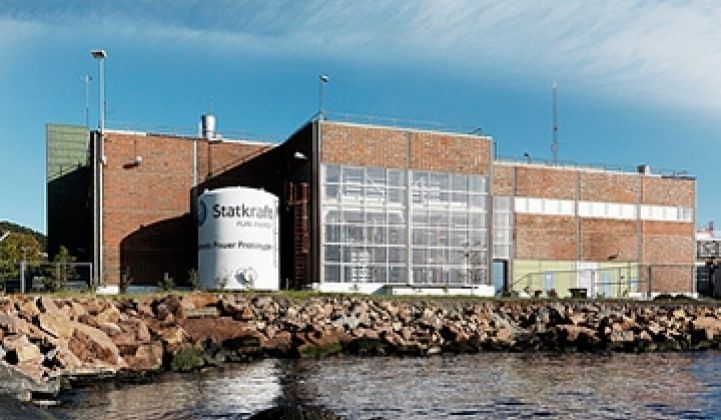Statkraft, a state-owned power plant in Norway, has opened up a prototype power plant that produces power from seawater, but more are likely on the way.
The power plant – which relies on a concept called osmotic pressure gradients – will produce 2 to 4 kilowatts and cost about $8 million. Commercial versions that can produce megawatts might come on line in 2015.
Although the concept strikes many as wacky, it is gaining traction among researchers and desalination companies because generating power from osmotic pressure gradients is really an extension of reverse osmosis desalination. Energy Recovery, the Oakland, California-based desalination expert, in fact, provided equipment to Statkraft and said that these trials would begin later this year.
As reported here first, Researchers at IBM's Almaden Labs, for instance, are putting together an internal proposal to see if Big Blue's desalination membrane technology could be used for osmotic pressure gradients. Danish startup Aquaporin meanwhile is examining how it can deploy an artificial protein it has created for desalination for energy harvesting. Aquaporin works with French water giant Veolia on desalination research.
"You have the potential of approximately 2,000 terawatt hours a year globally. Any place you have a stream going into the sea you have potential energy," Peter Holme Jensen, a microbiologist turned CEO of Aquaporin told us last year. Statkraft puts the figure at 1,600 terawatt hours. That's about half of the power consumed in Europe a year, but that 1,600 to 2,000 terawatt hour potential is worldwide, not located just in Europe.
Osmotic pressure gradients effectively generate water pressure without raging currents. They work like this. Fresh water from streams and rivers tumbles toward a tank of sea water. Between the fresh water and the sea sits a membrane. The differences in salt concentration draw the fresh water through the membrane. The membrane can also eliminate additional impurities.
As more fresh water enters the tank, the salt concentration decreases but the growing volume of water increases the water pressure in the tank. The pressure can then be harvested to turn a turbine. In effect, it is hydroelectric power without a Niagara. Norway's fjords make it prime osmosis country.
One of the potential selling points is that the production of power is somewhat predictable, or at least more predictable than wind and solar. Osmotic pressure gradient power plants would also not have to face some of the same harsh conditions that tidal power turbines will.
Nonetheless, it is still high concept and few can predict accurately whether it will be cost effective or environmentally friendly. Statkraft has been talking about it for years. Here is a PowerPoint from 2004.
Photo of Statkraft's osmotic power prototype via the company.



